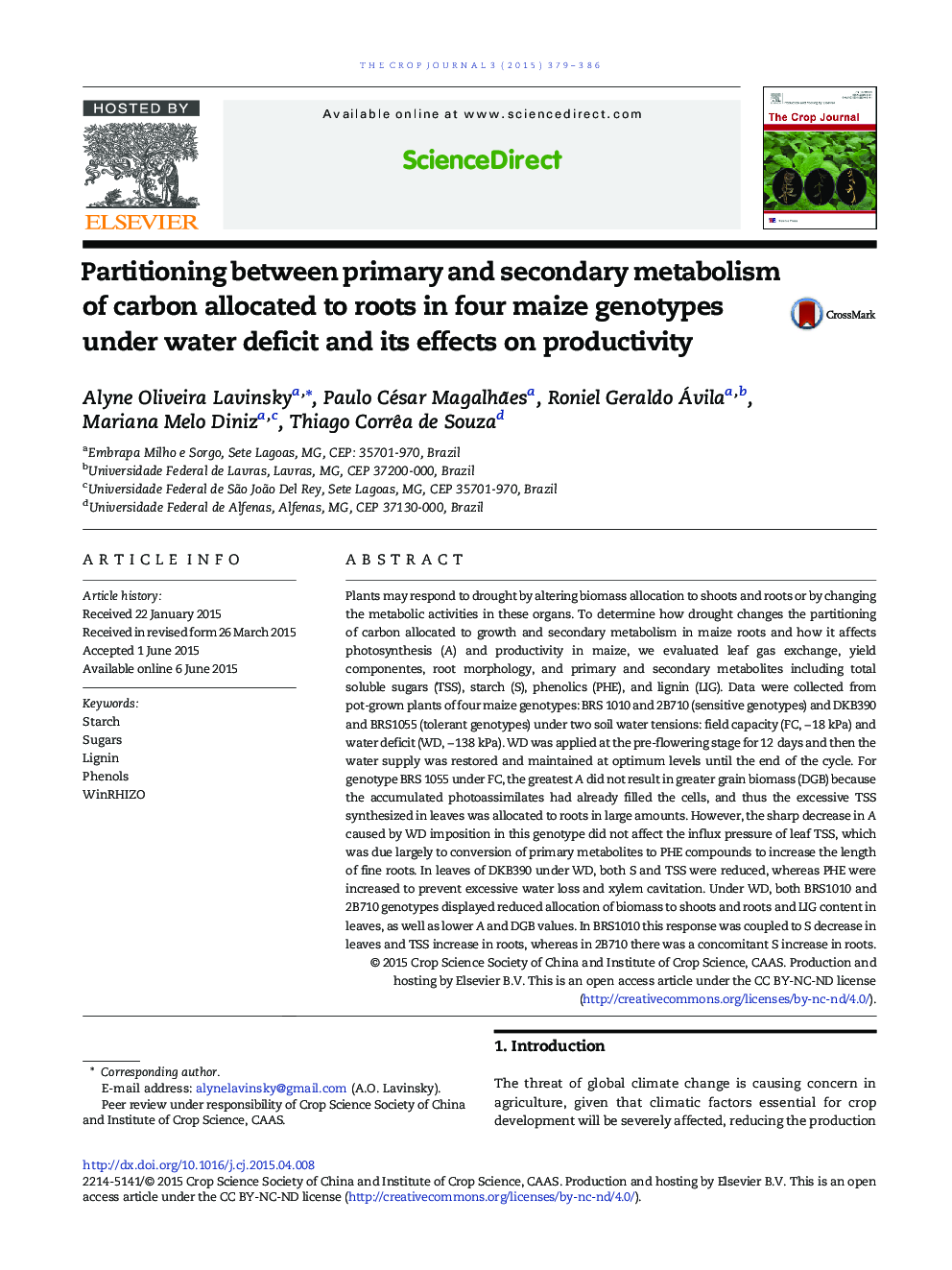| کد مقاله | کد نشریه | سال انتشار | مقاله انگلیسی | نسخه تمام متن |
|---|---|---|---|---|
| 2079441 | 1079869 | 2015 | 8 صفحه PDF | دانلود رایگان |
Plants may respond to drought by altering biomass allocation to shoots and roots or by changing the metabolic activities in these organs. To determine how drought changes the partitioning of carbon allocated to growth and secondary metabolism in maize roots and how it affects photosynthesis (A) and productivity in maize, we evaluated leaf gas exchange, yield componentes, root morphology, and primary and secondary metabolites including total soluble sugars (TSS), starch (S), phenolics (PHE), and lignin (LIG). Data were collected from pot-grown plants of four maize genotypes: BRS 1010 and 2B710 (sensitive genotypes) and DKB390 and BRS1055 (tolerant genotypes) under two soil water tensions: field capacity (FC, − 18 kPa) and water deficit (WD, − 138 kPa). WD was applied at the pre-flowering stage for 12 days and then the water supply was restored and maintained at optimum levels until the end of the cycle. For genotype BRS 1055 under FC, the greatest A did not result in greater grain biomass (DGB) because the accumulated photoassimilates had already filled the cells, and thus the excessive TSS synthesized in leaves was allocated to roots in large amounts. However, the sharp decrease in A caused by WD imposition in this genotype did not affect the influx pressure of leaf TSS, which was due largely to conversion of primary metabolites to PHE compounds to increase the length of fine roots. In leaves of DKB390 under WD, both S and TSS were reduced, whereas PHE were increased to prevent excessive water loss and xylem cavitation. Under WD, both BRS1010 and 2B710 genotypes displayed reduced allocation of biomass to shoots and roots and LIG content in leaves, as well as lower A and DGB values. In BRS1010 this response was coupled to S decrease in leaves and TSS increase in roots, whereas in 2B710 there was a concomitant S increase in roots.
Journal: The Crop Journal - Volume 3, Issue 5, October 2015, Pages 379–386
